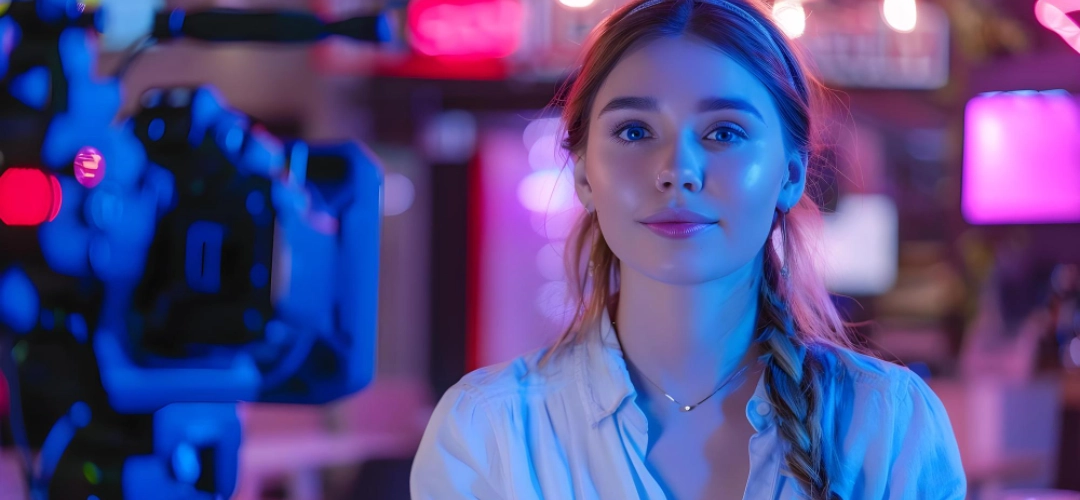- How Virtual Influencers Are Made
- The major technologies that make up virtual influencers:
- The Appeal of Virtual Influencers
- Here Are Some Key Factors That Make Them Appealing:
- How Virtual Influencers Drive Brand Engagement
- Ways virtual influencers drive brand engagement:
- Transparency in Future Virtual Influence
There is a huge change taking place in the world of social media influence. Besides the already known human influencers, other types of trendsetters are arising as well: virtual influencers. These computerised personalities also referred to as virtual celebrities or synthetic media products are attracting both audiences and brands.
This blog post will examine various aspects about virtual influencers including their origin, impact, and future possibilities. We are going to discuss how social media marketing via virtual models determine consumer actions, increase Instagram growth for businesses and pose questions regarding the evolving nature of online identity.
How Virtual Influencers Are Made
Virtual influencers are not like ratifying personas; they do not exist in real life. Instead, they’re artificially generated through advanced technologies such as 3D modeling, animation and AI (Artificial Intelligence). This has made it possible for them to be seamlessly integrated into reality so that one can hardly differentiate between what’s real and what isn’t.
The creation process involves a team of skilled professionals, including 3D artists, character designers, animators plus sometimes even writers who create background stories and personalities for such virtual influencers.
The major technologies that make up virtual influencers:
- 3D Modeling: This is what virtual influencers’ appearance is based on, defining their physical properties and details.
- Animation: Brings the creation to life, making realistic movement and expressions possible.
- Artificial Intelligence: Despite being nascent, AI can help personalize fans' interactions by responding to comments and messages of virtual influencers as if they were real.
The Appeal of Virtual Influencers
Virtual influencers occupy a special place in the social media sphere. Unlike human influencers who may have scandals or fall in popularity, brands have a lot of control over virtual influencers which are consistent.
Here Are Some Key Factors That Make Them Appealing:
- Perfect Image: Virtual Influencers embody an idealized perfect image often aligned with particular demographics or aesthetics that fully resonates with them. Brands hence tailor make these creations to suit their target market.
- Scalability: Virtual Influencers are not geographically confined by any means. They can appear in multiple campaigns simultaneously and engage global audiences without barriers.
- Scandal-Proof: With human influencers who may face personal controversies, virtual influencers remain untarnished thereby protecting brand reputation from ruin.
- Creative Freedom: Virtual influencers can transcend all frontiers. They can have lives in imaginary worlds, go against the laws of gravity and push the boundaries of creativity that human influencers are limited to.
Data points out that this method appeals to audiences. Consequently, a report by Virtual Influencers discovered that 62 percent of respondents observed virtuality in influencer marketing as something they could relate to albeit being digital.
How Virtual Influencers Drive Brand Engagement
Virtual influencers are proving to be powerful marketing tools. Brands are leveraging their reach and engagement to achieve marketing objectives.
Ways virtual influencers drive brand engagement:
- Product Promotion: Virtual influencers can seamlessly showcase products, integrate them into their content, and create a sense of aspiration around brands.
- Storytelling: With carefully crafted narratives and engaging personalities, virtual influencers can tell brand stories, fostering deeper connections with audiences.
- Global Reach: The digital nature of virtual influencers allows them to transcend language and cultural barriers, connecting with audiences worldwide.
Data from Influencer Marketing Hub indicates that influencer marketing campaigns can deliver an ROI of up to $5.20 for every $1 spent. While this data applies to human influencers as well, virtual influencers hold the potential to further amplify this ROI due to their controllability and scalability.
Transparency in Future Virtual Influence
The advent of virtual influencers raises some interesting ethical questions. People should know they are interacting with a CG character. The Federal Trade Commission (FTC) already issued guidelines on disclosure by human sponsored posts; it is highly likely that similar rules will be applied to virtual influencers in the future.
Other than transparency, we ought to consider the potential impact of virtual influencers upon body image and self-esteem. This makes it vital that healthy online habits and critical thinking skills are instilled among viewers especially given the increasingly realistic nature of these digital personas.
Looking forward into the next few years, there is so much possible with virtual influencer’s future. Here are some exciting possibilities:
- Developments within artificial intelligence may produce more interactive and responsive virtual influencers which push even further beyond human-machine interactions.
- Virtual influencers have the capability to create and communicate altering their content and style for different people. They can cater to individuals’ needs giving them personalized experience of social media.
- Use cases are changing: virtual influencers may go beyond brand marketing and engage in teaching, entertainment, or even customer service.
Nevertheless, there are moral issues that should be considered as these advancements take place. For this technology to remain transparent and responsibly used, regulations have to change alongside best practices.
The notion of virtual influencers is an exciting development in the field of social media. Brands can leverage on them as a potent means of worldwide promotional tool towards deep audience involvement. As technology advances further, the difference between real life and digital world will clearly become more blurred. In the future years transparency, responsible use promotion by fostering critical thinking skills among its viewers could make virtual influencers a positive force for change and innovative advancements.
Latest Blogs
- 22/01/2025in Digital Marketing, SEO Blogs
Brands that Made a Mark at Maha Kumbh
... - 17/01/2025in Digital Marketing, SEO Blogs
Marketing Strategy V/S Marketing Plan: The Basics
... - 09/01/2025in Digital Marketing, SEO Blogs
No Logo, No Marketing: Muji, The Anti-Brand Brand
... - 12/12/2024in Digital Marketing, SEO Blogs
Top Social Media Forecast in 2025
...

